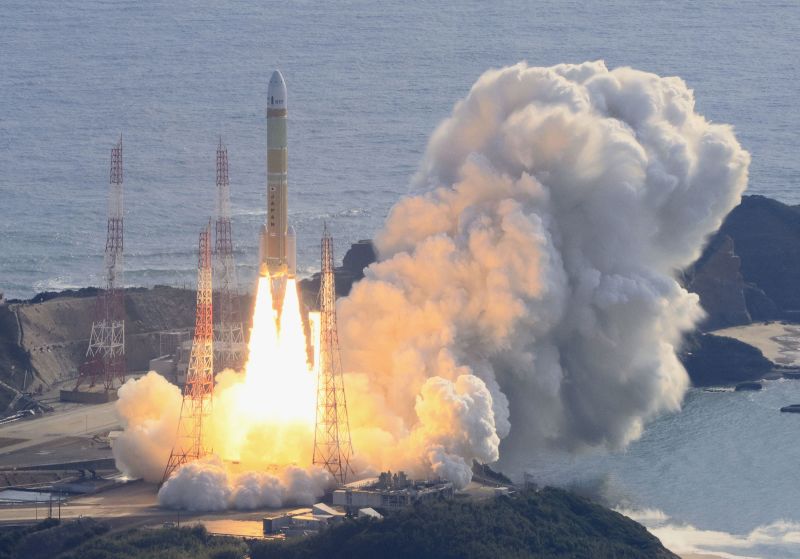Japan’s space agency says it has successfully launched its flagship H3 space rocket, a year after its maiden attempt ended in failure.
The H3 left the Tanegashima Space Center in southern Japan at 9:22 a.m. local time on Saturday, the Japan Aerospace Exploration Agency (JAXA) said in a statement.
The space body said it had confirmed the combustion of the second-stage engine was complete, and the rocket had reached orbit as planned.
As the successor to Japan’s H-2A and H-2B rockets, the H3 is designed to be more economical by using commercial off-the-shelf products, rather than exclusive aerospace components, according to JAXA.
JAXA expects the H3 to be able to launch both government and commercial missions in the future and, if it is successful, the space agency has plans to launch it as often as six times a year for the next two decades.
H3’s maiden launch ended in failure last March when its second stage failed to ignite and its controllers issued a destruct command just 15 minutes after lift-off. That was just one of a string of problems for the maiden launch, which had already been postponed after ignition failures hit two of the rocket’s secondary booster engines.
Saturday’s successful launch is a second win for JAXA in as little as two months after its “moon sniper” robotic explorer landed on the lunar surface in January.
JAXA hailed that moment as “a significant achievement for future lunar and planetary exploration,” despite technical hiccups that had left the Smart Lander for Investigating Moon, or SLIM, inoperable for days upon landing.
The spacecraft had touched down facing the wrong direction, preventing its solar cells from generating power. However, 10 days later it woke up.
JAXA had also used new precision technology to demonstrate a “pinpoint” landing within 100 meters of the SLIM’s target.
Japan is the fifth country to safely put a spacecraft on the moon, following India’s success with its Chandrayaan-3 last August. The United States, the former Soviet Union and China have also put spacecraft on the moon.
The new space race is partly driven by countries’ desire to access water trapped as ice in permanently shadowed regions of the lunar south pole. Experts say this could be used for drinking water or for fuel as humanity pushes the boundaries of space exploration in the future.





































